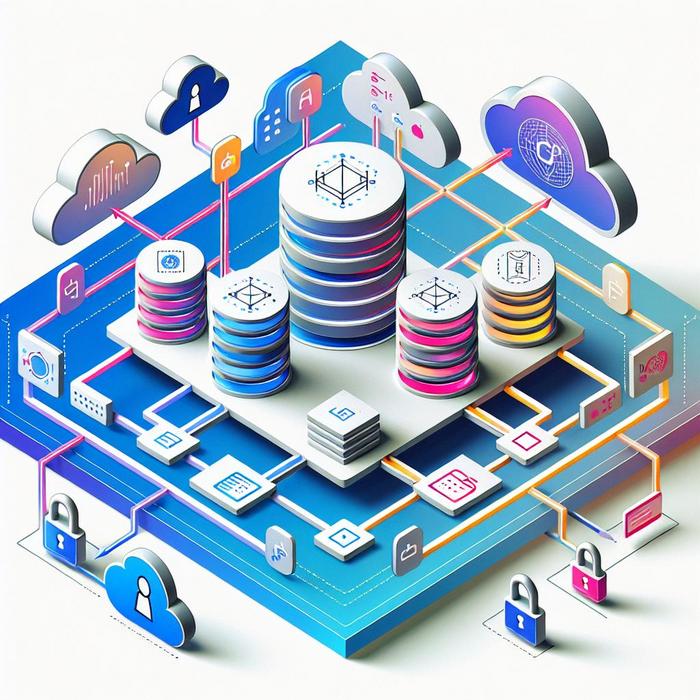Table of Contents Hide
Your GDPR Compliance Checklist for 2024
 6 MIN. READING
6 MIN. READING
Are You Ready for the 2024 GDPR Compliance?
As a CIO, CTO, data architect, or IT leader, you understand the strategic importance of maintaining compliance with data regulations. However, are you aware that your GDPR (General Data Protection Regulation) compliance measures must be updated continually to stay abreast of changes in the digital landscape?
Data today has become an essential asset for any organization. Harnessing it effectively and responsibly can lead to significant advantages. But at the same time, this critical asset comes with enormous responsibilities, one of which is ensuring GDPR compliance. Understanding the need for a GDPR Compliance Checklist essential to secure your data infrastructure will put you at the forefront of becoming a data-driven organization.
Data Anonymization: Essential for GDPR Compliance
Often, companies treat data as a treasure that needs to be locked up and guarded. Some of the most valuable assets in an organization’s information portfolio are the realistic data that drives strategic decision-making. However, despite the worth of this data, it needs to be accessible to different stakeholders. It’s an intricate balance — maintaining data security while keeping it accessible.
That’s where database virtualization contributes. By creating a virtual data layer that offers unified access to data across varied sources, database virtualization accelerates data provisioning for testing, development, and analytics. This is done without moving or replicating the data, therefore reducing potential security breaches.
However, to make your realistic data GDPR compliant, you need to anonymize it. This is where data anonymization comes into play. Anonymization of data ensures that personal identifiers are irreversibly replaced with fictional, yet realistic, equivalents. This practice not only protects personally identifiable information but also allows tactical use of the data without compromising GDPR compliance.
Database Virtualization and GDPR Compliance
Keeping ahead of regulatory requirements is a fundamental part of effective database management, and virtualizing your database is an innovative way to achieve this.
Database virtualization allows for centralized control over your data architecture, providing a comprehensive view of all data sources. This comprehensive visibility, coupled with the power to govern the data at all times, is pivotal to being GDPR compliant. It allows you to achieve a level of data governance that guarantees adherence to data protection regulations.
Utilizing database virtualization also enables rapid data provisioning, allowing you to streamline workflows and ensure that the right data is available to the right resource at the right time. This not only enhances efficiency but reduces the probability of data breaches, another significant factor in ensuring GDPR compliance.
Refine Your Data Governance for GDPR Compliance
Last but not least, the goal of becoming GDPR compliant requires an organization-wide drive to embrace a culture of data governance. Implementing a systemic approach to data governance can ensure that your organization stays abreast of the ever-evolving data landscape while remaining compliant with the GDPR.
Scaling enterprises with data governance tools can be a strategic move forward. By cultivating a data-centric culture within the organization, you can unlock the potential to leverage data insights while ensuring strict adherence to GDPR regulations.
Thus, as 2024 approaches, gearing up toward GDPR compliance calls for a concerted effort to leverage advanced data solutions, anonymize data, virtualize databases, and refine data governance processes.
These strategies not only secure your digital assets but also build a strong foundation for sustainable growth, driven by responsible and strategic data usage. Get ready to meet 2024 head-on, armed with a comprehensive GDPR compliance checklist.
How Can You Brace Your Organization for GDPR Compliance?
So, you a data architect, IT leader, CIO, or even a CTO, are prepared for the GDPR compliance mandate? Yes, the 2024 deadline is looming but there’s no need to panic if you use the time left wisely. Where in the grand scheme of global digital currency does GDPR compliance fit your organization?
Well, those in the digitized corporate world consider data as a form of gold dust. It confers a significant competitive advantage and consequently, the safeguarding of data from infringement is of utmost importance. One imperative aspect, therefore, would be establishing a robust GDPR Compliance Framework to keep your data infrastructure resolute and not falter under the ever-evolving data regulations.
The Role of Data Anonymization in Ensuring GDPR Compliance
Solidifying a company’s data integrity continues to bewilder many IT leaders, given the delicate balance required. How does one create an ecosystem that ensures data security yet facilitates easy access when required? Database virtualization comes into play here by creating harmonized access to varied and diversified data sources.
While making realistic data obtainable without risking security breaches sounds ideal, these measures alone aren’t sufficient to ensure GDPR compliance. It’s crucial to couple these security measures with data anonymization techniques.
Linking it back to data anonymization, by mutating personally identifiable information (PII) into fictional yet realistic equivalents, organizations protect their data and abide by GDPR compliances. Employing data anonymization techniques allows optimal use of data, all while demonstrating commitment to individual privacy and data protection.
Maintaining GDPR Compliance via Database Virtualization
Consider this: Is your organization at the helm of the persistent changes in regulatory requirements? If you’re unsure, now would be an opportune moment to consider the significance of database virtualization.
Comprehending the diversity of database virtualization can help revolutionize your company’s data management approach. In essence, the technique provides a panoramic view of your organization’s data architecture, underlining all data sources. What’s more? It also provides continuous governance over all aspects of the data being processed. Well-aligned with GDPR regulations, database virtualization ensures your organization will stay in compliance with data protection regulations.
Moreover, implementing virtualization techniques can haste the data provisioning process. And in doing so, reduces the likelihood of data breaches, accelerating efficiency and driving GDPR compliance.
Revamping Data Governance towards GDPR Compliance
Lastly, let’s explore how a well-aligned approach to data governance can help pave the way for enhanced GDPR Compliance. The stratagem is simple: cultivate a culture rooted in robust data governance.
Balancing the systemic approach between data insights and the need for data privacy regulations is a tightrope act. However, having a keen focus on data governance policies will help you navigate through it with ease.
A data-centric outlook, replete with high-quality tools for data governance, will not only enable data compliance but also spur overall growth. The time is now to foster a compliance culture. Use the impending 2024 GDPR deadline as a catalyst to drive your organization into building a comprehensive GDPR compliance framework.
So, let’s rise to meet this challenge head-on. Let’s commit to the creation of innovative strategies for data manipulation, database virtualization, and data governance. Facing 2024 with such significant compliance measures in place will ensure your organization’s continued growth, all while promoting trust and integrity among users. This harmony between data use, growth, and privacy is a mark of digital resilience — so let’s start building. And remember, in this journey, every step towards GDPR compliance is a leap towards sustainable development.


